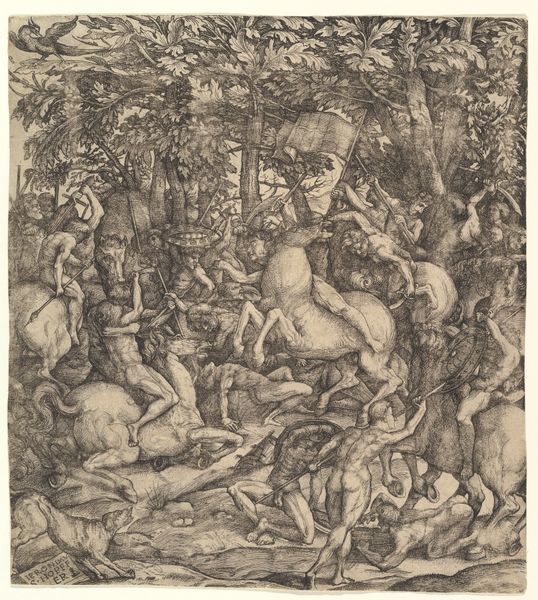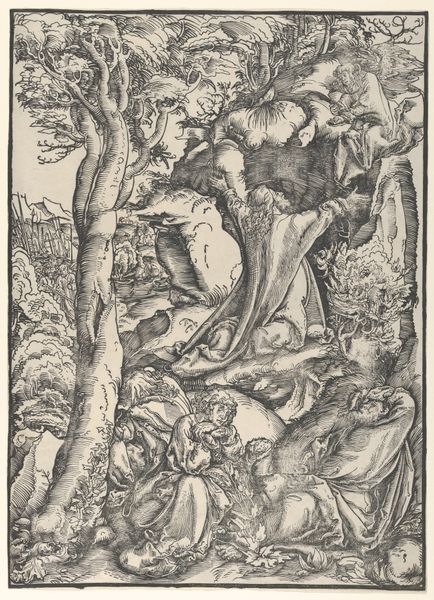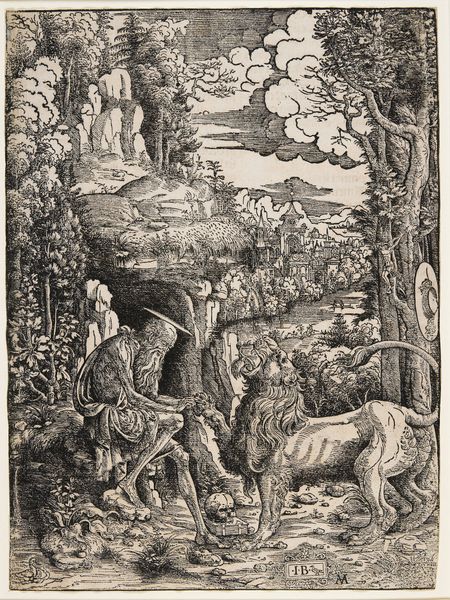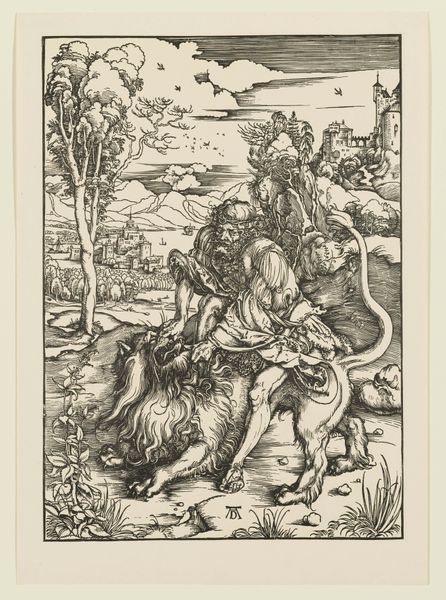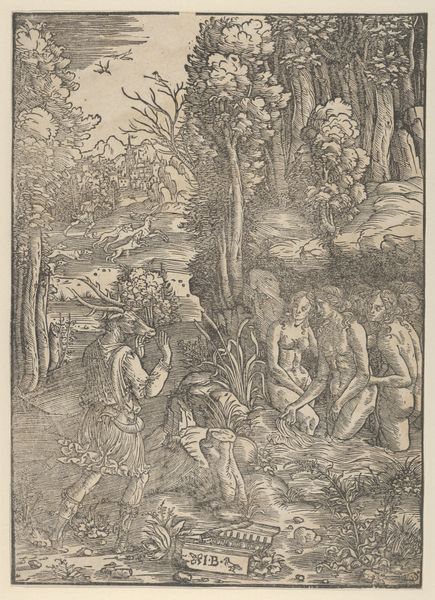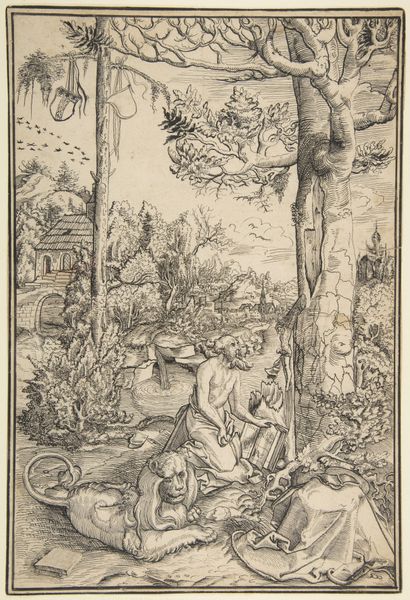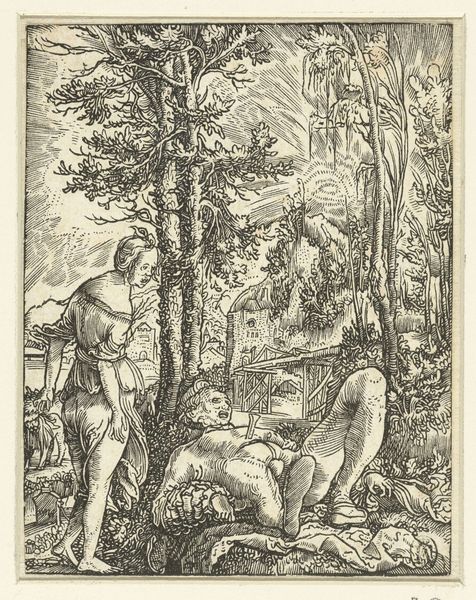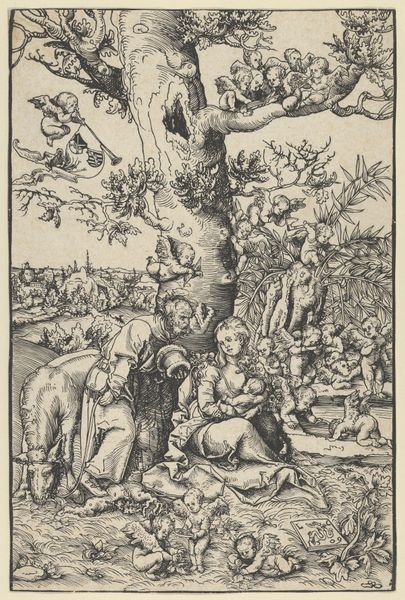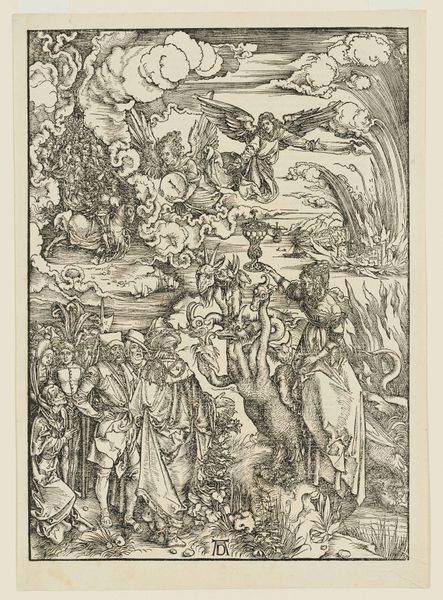
drawing, print, woodcut
#
drawing
#
ink drawing
#
narrative-art
#
pen drawing
# print
#
landscape
#
figuration
#
woodcut
#
line
#
pen work
#
history-painting
#
northern-renaissance
Dimensions: 15 3/8 x 11 1/16 in. (39.05 x 28.1 cm) (image)
Copyright: Public Domain
Curator: Welcome. Before us, we have a print titled "The Knight on Horseback and the Lansequenet," created by Albrecht Dürer around 1498. It is currently held in the collection of the Minneapolis Institute of Art. Dürer worked this scene in woodcut and also ink drawing, a favored technique during the Northern Renaissance. Editor: It strikes me immediately as this almost theatrical stage—the players arranged with this backdrop of the fairytale castle. It is both beautiful and a little unnerving... Curator: I think "unnerving" hits it right on the head. What we're seeing here are, more or less, the changing social orders of the late 15th century. A knight—likely representative of older aristocratic power—is paired alongside a foot soldier, a landsknecht, the modern mercenary. Notice their shared visual space. Editor: So, like, progress breathing down the neck of tradition. The knight looks so suspicious, glancing sideways. What's fascinating is how Dürer conveys that tension through something as simple as line work. The density of lines for the soldier practically radiates this robust, forceful energy. Curator: Exactly. Dürer understood the cultural currents shaping his world. While ostensibly a historical or genre scene, these depictions reflected, perhaps even fueled, anxieties about power shifts. Printmaking made these ideas portable, affordable, widely disseminated. The imagery therefore played a distinct role in society. Editor: It is this fascinating intersection. This little dance between beauty, apprehension, change, all contained within this single print...The trees lean in too as if to eavesdrop... Curator: Ultimately, this print reflects the anxieties, ambitions, and visual innovations that defined a pivotal moment in European history, a moment Dürer so keenly observed and articulated. Editor: Dürer had a talent for pinpointing those anxieties... I’m seeing the image in a whole new light—thanks.
Comments
No comments
Be the first to comment and join the conversation on the ultimate creative platform.

